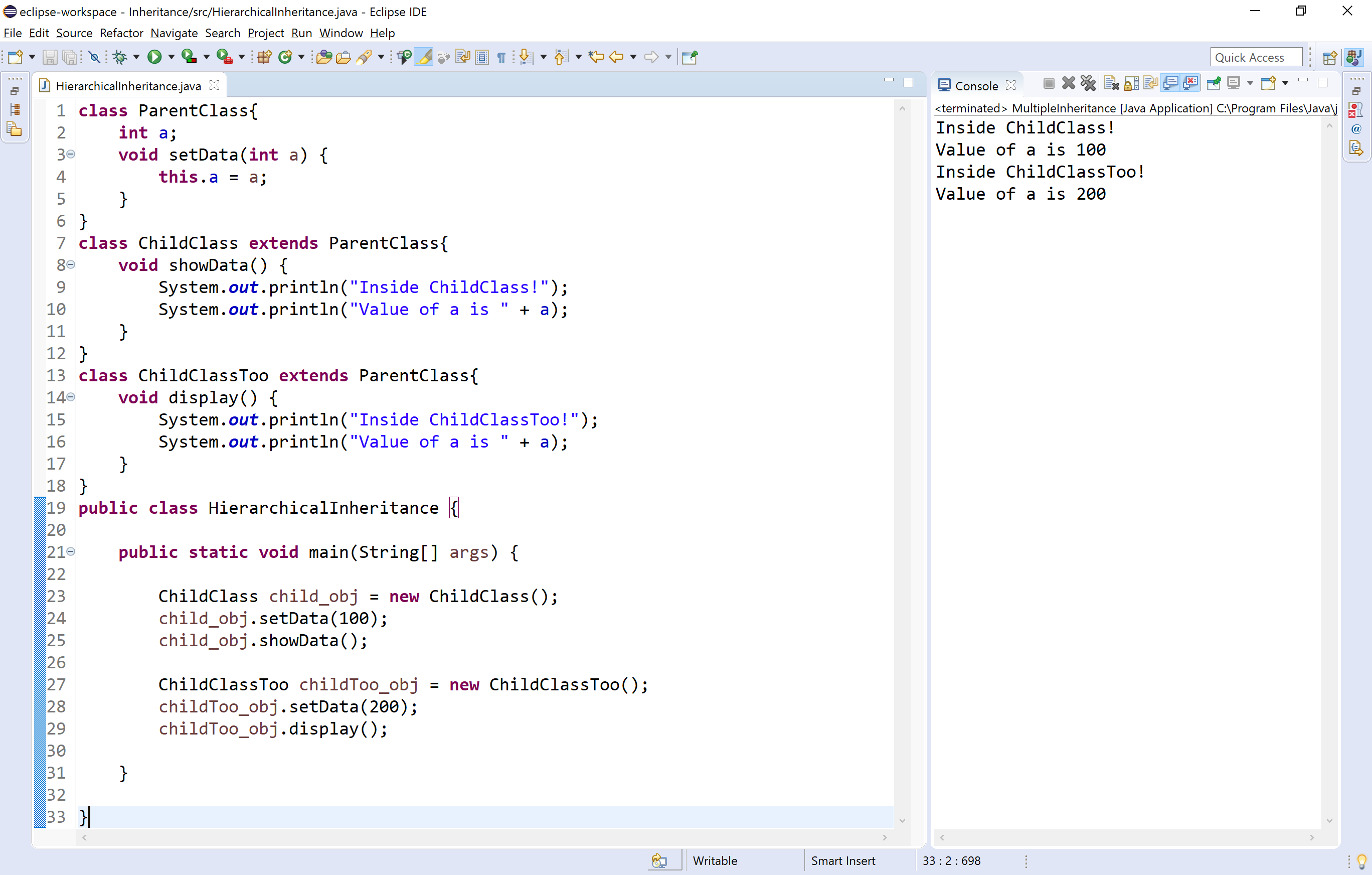

#Java inheritance constructor code#
Initialized before the object is used, including by code in the rest of theĬonstructor. It’s critical that all the instance variables in an object be properly Including private variables the subclass can’t directly access. This lets the superclassĬonstructor initialize the instance variables declared in the superclass Instead it runs the constructor’s code in theĬontext of the object currently being constructed. But unlike when we call a constructor with new, a call to superĭoesn’t create a new object. Way to call the code in a superclass constructor, passing whatever arguments it when followed with parentheses and arguments, super provides a The way out is provided by the keyword super. And sometimesĬonstructors do more complex initialization than just setting variables. If the super class provides public setter methods for those variables the Inherited methods are likely to work properly, so how can a subclass initialize Inherited instance variables need to be properly initialized or none of the And subclasses do not inherit constructors from the superclass. They cannot access the private instance variables of the superclassĭirectly.


The ] internal slot can be accessed with the Object.getPrototypeOf() and tPrototypeOf() functions.Subclasses inherit public methods from the superclass that they extend, but Note: Following the ECMAScript standard, the notation someObject.] is used to designate the prototype of someObject. While classes abstract most of the prototypical mechanism away, understanding how prototypes work under the hood is still useful. It is, for example, fairly trivial to build a classic model on top of a prototypical model - which is how classes are implemented.Īlthough classes are now widely adopted and have become a new paradigm in JavaScript, classes do not bring a new inheritance pattern. While this confusion is often considered to be one of JavaScript's weaknesses, the prototypical inheritance model itself is, in fact, more powerful than the classic model. It is possible to mutate any member of the prototype chain or even swap out the prototype at runtime, so concepts like static dispatching do not exist in JavaScript. By definition, null has no prototype, and acts as the final link in this prototype chain. That prototype object has a prototype of its own, and so on until an object is reached with null as its prototype. Each object has a private property which holds a link to another object called its prototype. When it comes to inheritance, JavaScript only has one construct: objects. JavaScript is a bit confusing for developers experienced in class-based languages (like Java or C++), as it is dynamic and does not have static types. Warning: unreachable code after return statement.Warning: -file- is being assigned a //# sourceMappingURL, but already has one.TypeError: X.prototype.y called on incompatible type.TypeError: setting getter-only property "x".TypeError: Reduce of empty array with no initial value.TypeError: property "x" is non-configurable and can't be deleted.TypeError: invalid assignment to const "x".TypeError: invalid 'instanceof' operand 'x'.TypeError: cannot use 'in' operator to search for 'x' in 'y'.TypeError: can't redefine non-configurable property "x".TypeError: can't delete non-configurable array element.TypeError: can't define property "x": "obj" is not extensible.TypeError: can't convert BigInt to number.TypeError: can't assign to property "x" on "y": not an object.TypeError: "x" is not a non-null object.Synta圎rror: Using to indicate sourceURL pragmas is deprecated.Synta圎rror: unterminated string literal.Synta圎rror: unparenthesized unary expression can't appear on the left-hand side of '**'.Synta圎rror: unlabeled break must be inside loop or switch.Synta圎rror: Unexpected '#' used outside of class body.Synta圎rror: test for equality (=) mistyped as assignment (=)?.Synta圎rror: redeclaration of formal parameter "x".Synta圎rror: missing = in const declaration.Unicode character class escape: \p after property list.Character class escape: \d, \D, \w, \W, \s, \S.Enumerability and ownership of properties.


 0 kommentar(er)
0 kommentar(er)
